FREE RETURNS
FREE SHIPPING


THE SUIT
WHAT TO THINK ABOUT WHEN PURCHASING YOUR SUIT
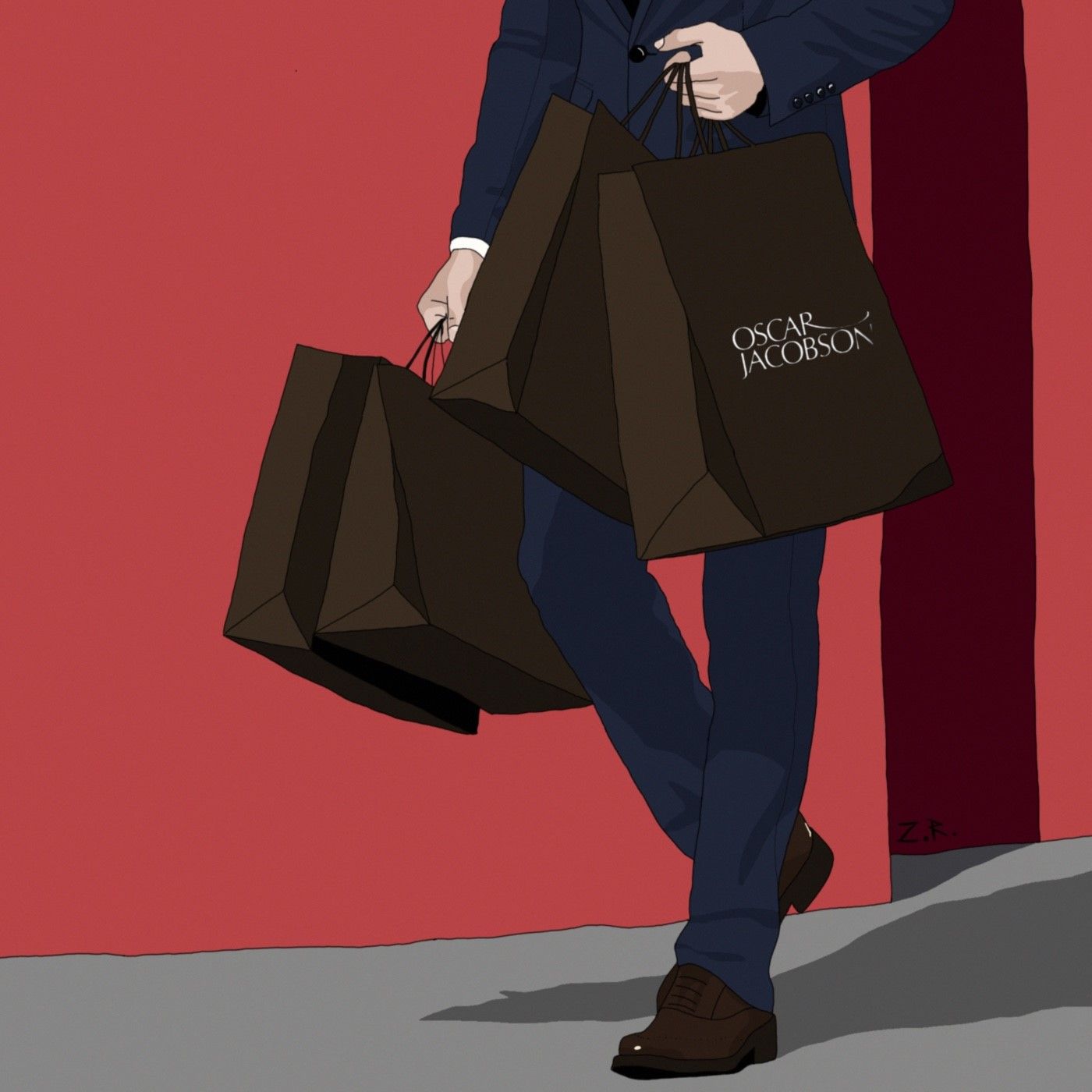
In this text, you will get tips on things to keep in mind when buying a suit. We will answer frequently asked questions about fabrics, fits and sustainability.
The text is mainly aimed at those buying a suit for the first time, and those who want to refresh their memory regarding the basics of suits.
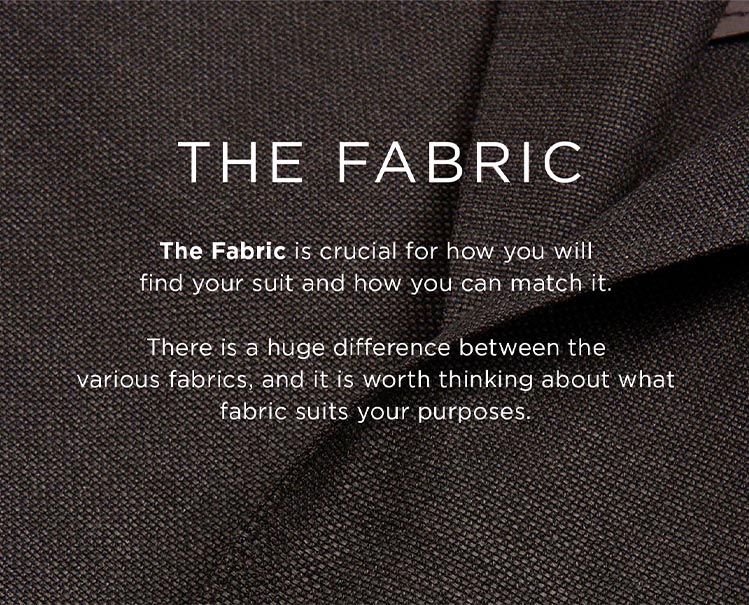
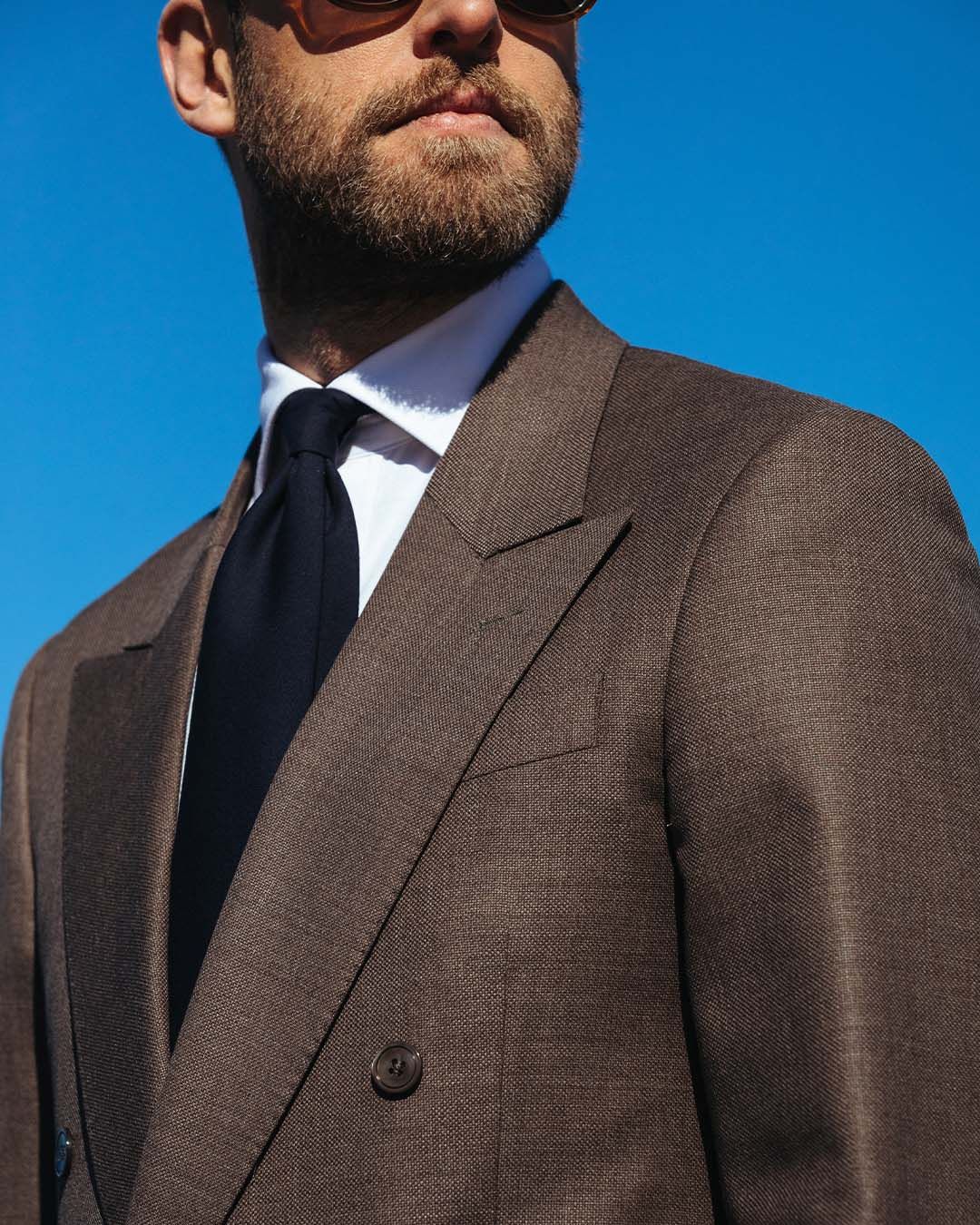
Wool is undoubtedly the most popular fabric for suits. Wool is cool in the summer and warm in the winter, depending on how thick it is and how it is woven.
It is the least wrinkly out of all the natural materials, making it perfect for formal occasions. Choose wool if you want a suit that goes with almost everything.
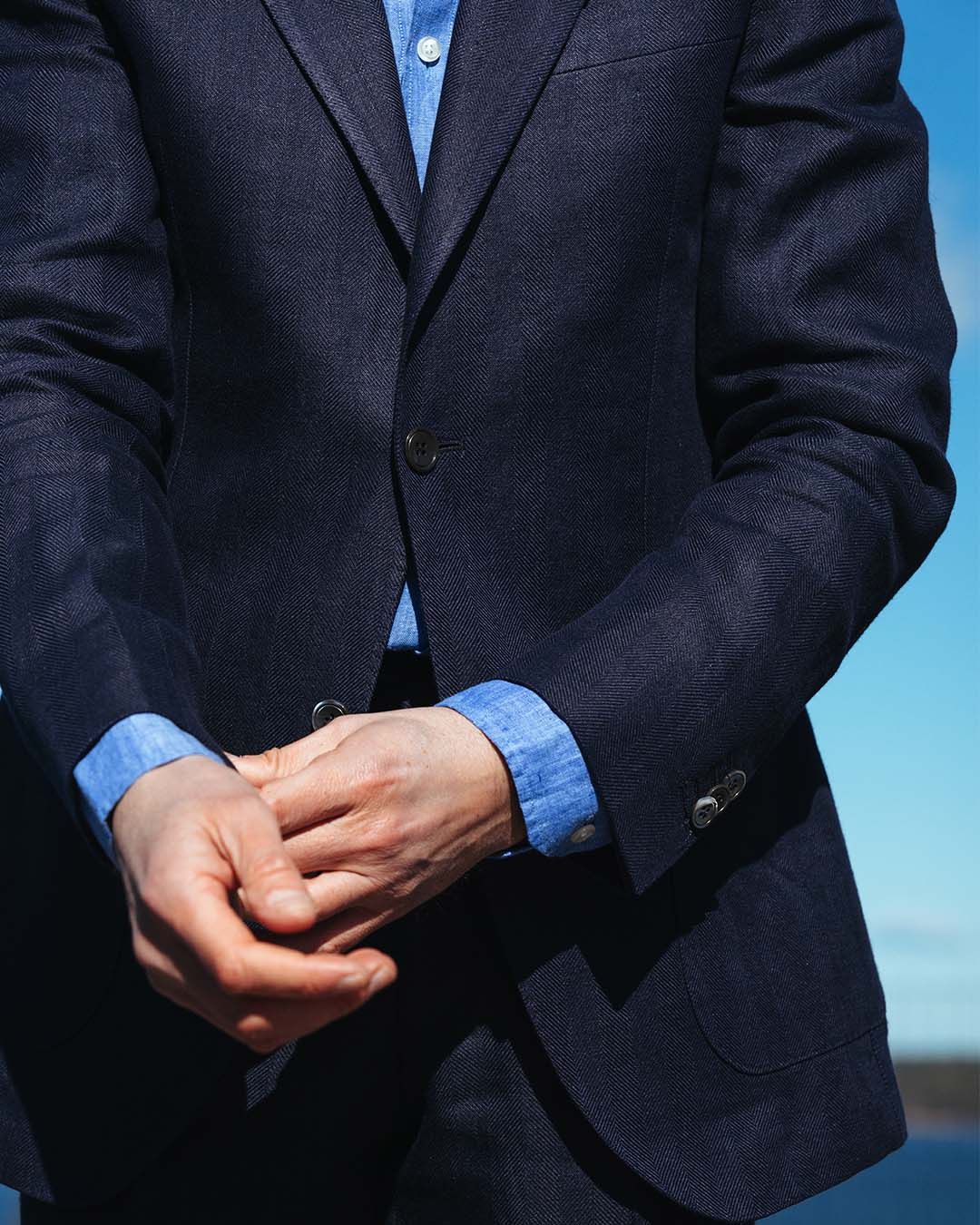
Linen is a natural material especially suited for a warmer climate. Linen shapes itself according to how you move and gives an informal impression.
Despite wrinkling, the high density of summer helps the fabric drape softly. There is something special about the texture of linen that appeals to a lot of people, making it a constant favourite at outdoor weddings and summer parties.
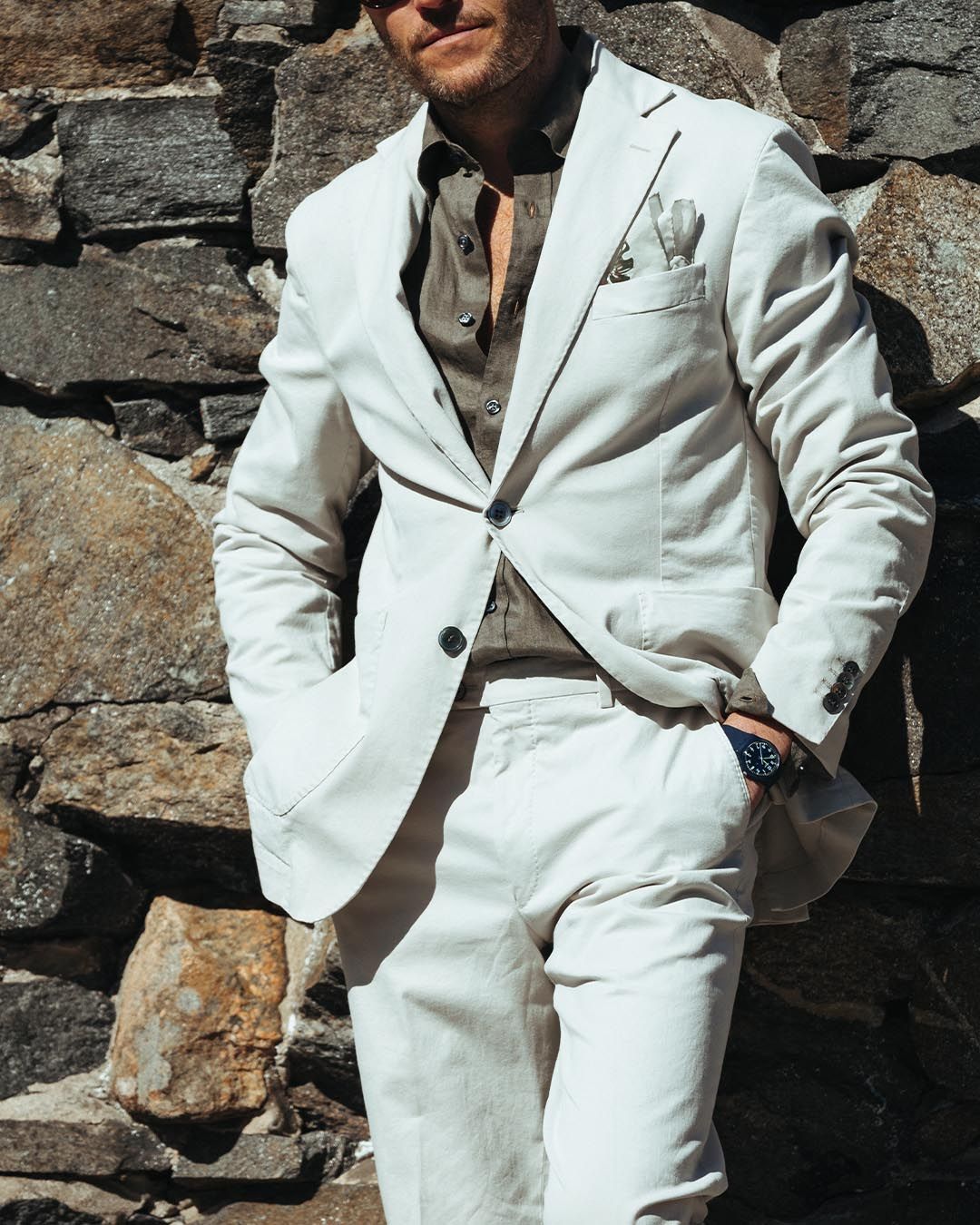
Cotton is a sportier choice of fabric for a suit. Its matte finish gives you a relaxed feel and the fabric breathes and is extra wear-resistant. A cotton suit can easily be split into an odd blazer and odd trousers.
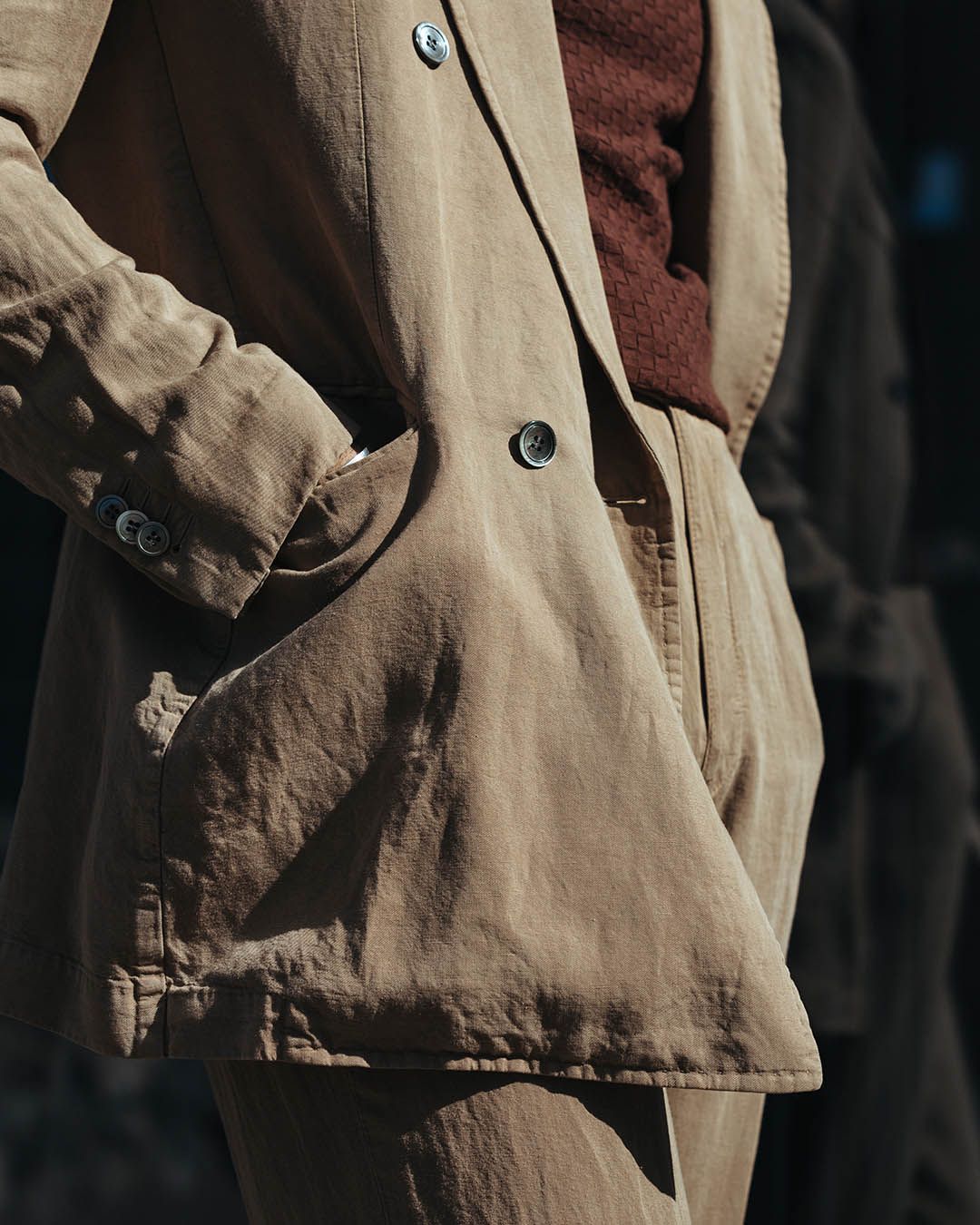
Mixed fibres come in many different variations. For example, you can mix wool and silk together in order to give a festive lustre to the fabric. It is also common to mix natural materials with polyester, polyamide and elastane to create a wear-resistant fabric.
A new material that has become more common is lyocell. Lyocell is a wood fibre reminiscent of soft cotton.
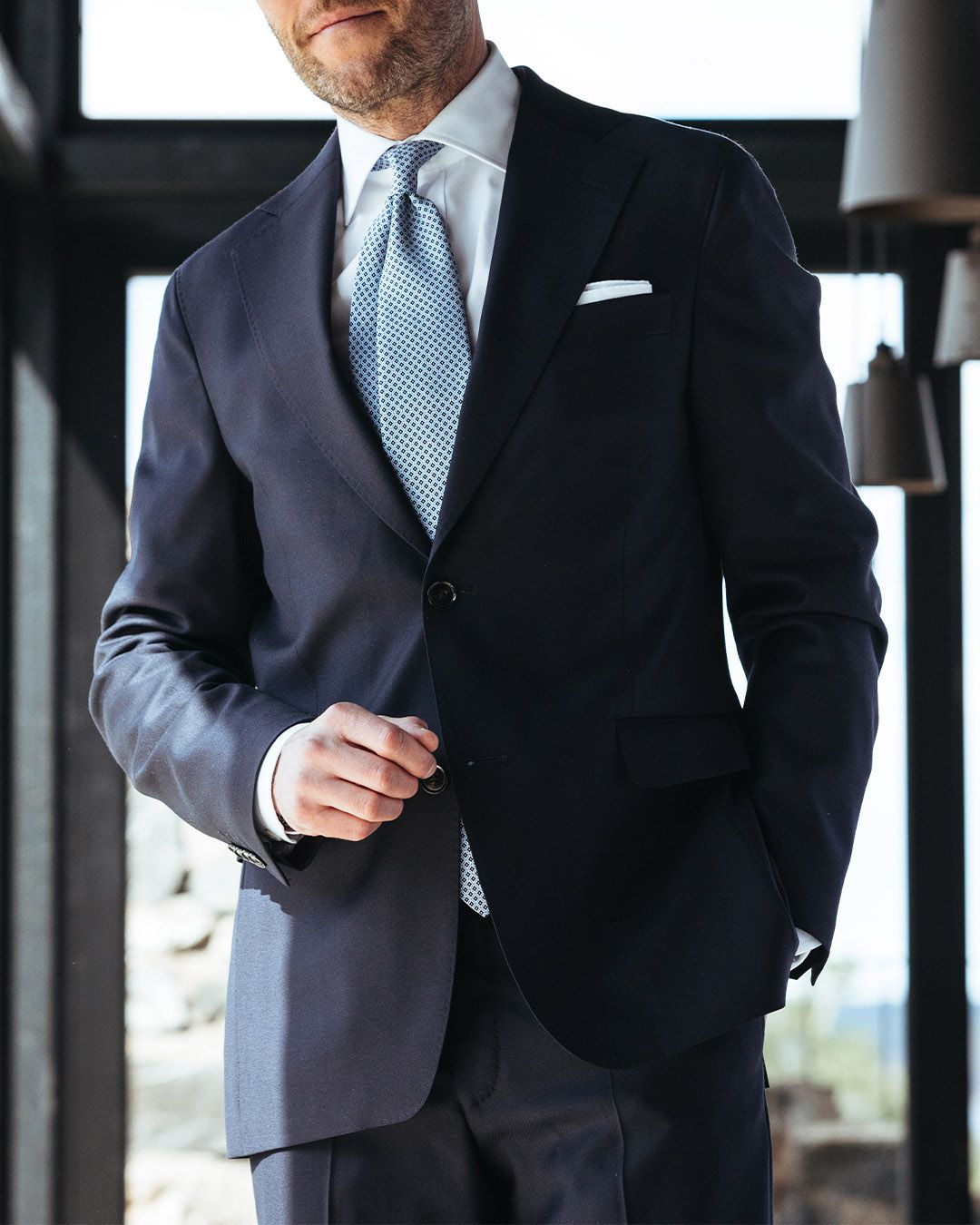
Luxurious fabrics are often made from exclusive types of wool such as cashmere and merino.
The age of the animal and where on the body that wool has been gathered from, affect the quality of the wool. The weaving mill spins the wool into thin threads and weaves light and durable fabrics with unique softness and lustre.
Come to our shops to feel our fabric samples.
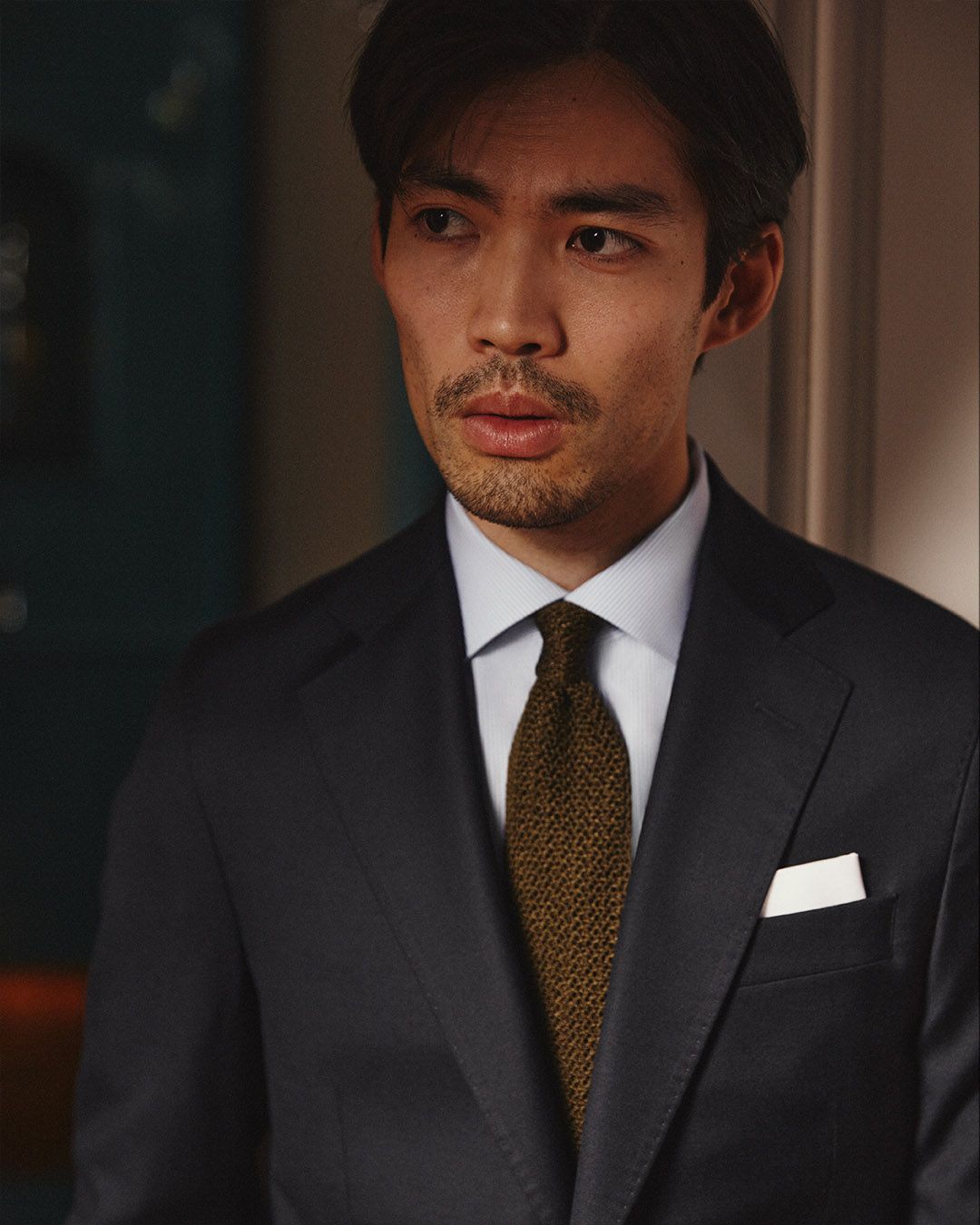
THE COLOUR
The colour of the suit should first and foremost suit you and fit in with the rest of your wardrobe. If you want to build from scratch and get a versatile suit, choose dark blue and gray. These colours suit most men and are very easy to match. Mixing either black or brown shoes can easily change the look.
Other colours are more individual and should be chosen in accordance with what looks good on you.

THE DESIGN
The design, or the cut, as it is called, refers to the details and how the piece of clothing has been cut. Is the blazer single- or double-breasted? Do the trousers have a high or a low waist? All variations have been made to fit different body shapes or purposes. Therefore, it is recommended that you try different variations to learn what suits you. Notice how your appearance changes depending on the cut of the blazer and the trousers.

CONSTRUCTION
The construction refers to how a blazer is made.
A classic blazer is constructed using interlinings and shoulder pads, creating stability. A soft or an extra soft construction means less interlinings and shoulder padding.
The less constructed a blazer is, the more your natural body shape is accentuated.

FIT
Fits are developed for the garments to fit different body types. With the right fit and size, you have a good chance of finding a well-fitted suit.
We have three different series, called the E, F and J fit.

SIZE
Size is key when it comes to well-fitted suits. All of our suits have extra seam allowances, making it possible to let out and take in the garment whenever the wearer’s measurements change.

DURABILITY
Many people wonder how long a quality suit will last. The truth is that it is different for everyone. Size and fit matters just as much as the fabric you have chosen based on your purpose. The way you look after it also affects its longevity.
We work with ”slow fashion”. To us, this means that our suits should last ten years. In order for that to be possible, quality must last, the garment should not go out of style and it should be possible to give it new measurements whenever needed.
WHAT DO YOU THINK?
We would like to know what is on your mind when you are buying a suit.
Get in touch and we will give you personal advice on which suit we think will fit you the best.
Any further questions? Call or send us an email.













